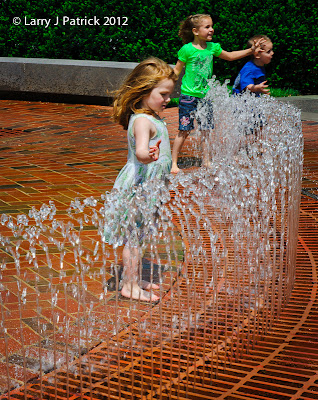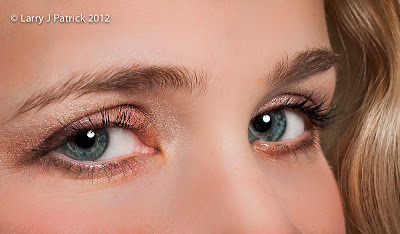The three children in the scene are
cousins. While watching the
children play in the water, I talked to their parents about taking a photo of
them playing.
What drew me to this scene, of
course, was the children playing; but I quickly noticed that the curvature of
the water spray was matched by the curvature of the wall in the
background. I thought this implied
circle would make a great composition.
Now, what did I do wrong. First, I was not patience. The real photo was the little girl in
the foreground and how she was studying the water. I should have waited until the two cousins moved out the
scene—which was right after this photo was taken. Second, this photo should have been
taken at f/8 (very sharp portion of this lens) which would have resulted in a
shutter speed of 1/750th of a second. The f/8 aperture would have better isolated her by making the foreground and background slightly out-focus and
the 1/750th of second would have frozen the water better—basically,
a win, win situation.
Enjoy.
Camera settings: Nikon D3, ISO 200, Nikon 24-70mm f/2.8 at 70mm, f/19 and
1/125th of a second.
Post Processing:
Lightroom 3:
Set black and white points, added contrast with a mild
curve and added a little vignetting.












